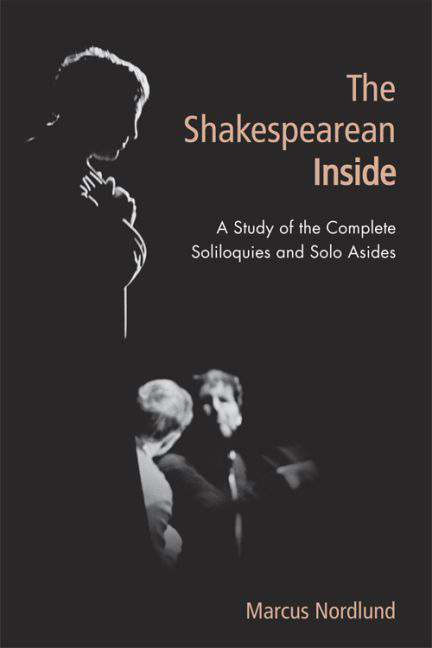Appendix 3 - Definitions and Explanations of Nodes
Published online by Cambridge University Press: 08 August 2017
Summary
Choice of Editions
This project applied a conservative principle to the attribution of plays to Shakespeare. The text used in the Shakespearean Inside Database (SID) is based almost entirely on the Arden Shakespeare, Complete Works, which contains the accreted efforts of many scholars over time, conflates selections from Quarto and Folio versions, and only includes plays that can be safely attributed to Shakespeare (in part or as a whole). One notable addition to this Arden-based roster is Edward III, which contains a number of insides that were almost certainly written by Shakespeare. This text had not yet been published by Arden when the database was compiled, and it was therefore collected from the New Cambridge Shakespeare edition.
It is likely that the list of thirty-nine plays is still incomplete and that a future version of the database will need to include other texts. One potential contender, especially if we are to trust the most recent stylometric tests indicating minimal adjustments by the eighteenthcentury editor Theobald, is Double Falsehood, which was published in the Arden Shakespeare series in 2010 (when this project had already begun). Since the distinction between dialogue and asides can sometimes be tenuous I have also double-checked ambiguous examples against two other editions (the Norton Shakespeare and the RSC edition). Whenever a passage was handled differently by the editors of these three editions, e.g. when two editors rendered a speech as an aside, while the third editor defined it as dialogue, I applied a simple majority rule.
A. LOCUS: where do we find the speech?
The word ‘locus’ covers both the place of the individual play in the Shakespeare canon (entries 1 and 2 below) and the location of the individual speech inside the individual play (3–4). All plays were defined as individual nodes and given two attributes: subgenre and year of composition. The internal position of the speech inside the play was coded directly in the text according to act (entry 3) and its relative location in the scene (entry 4).
- Type
- Chapter
- Information
- The Shakespearean InsideA Study of the Complete Soliloquies and Solo Asides, pp. 212 - 224Publisher: Edinburgh University PressPrint publication year: 2017



